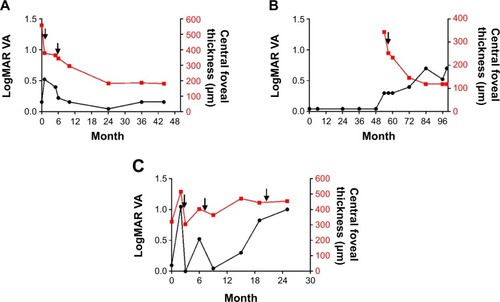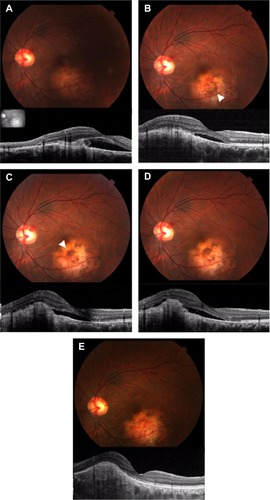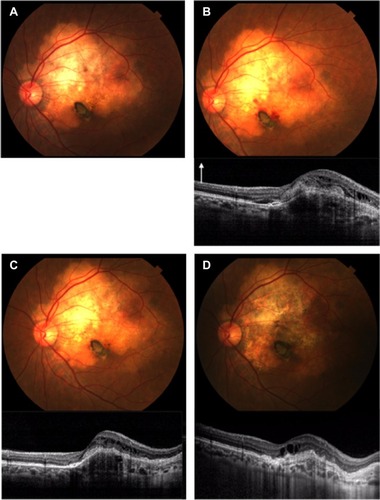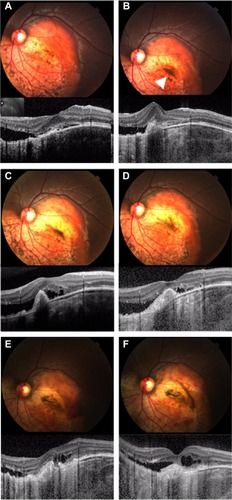Figures & data
Table 1 Clinical characteristics of choroidal osteoma patients
Figure 1 Response of choroidal osteoma to intravitreal injections of bevacizumab.

Figure 2 Thickness of the choroidal osteoma using enhanced depth imaging optical coherence tomography.

Figure 3 Photograph and spectral domain optical coherence tomography findings for case 1.

Figure 4 Photograph and spectral domain optical coherence tomography (SD-OCT) findings for case 2.

Figure 5 Photograph and spectral domain optical coherence tomography findings for case 3.

